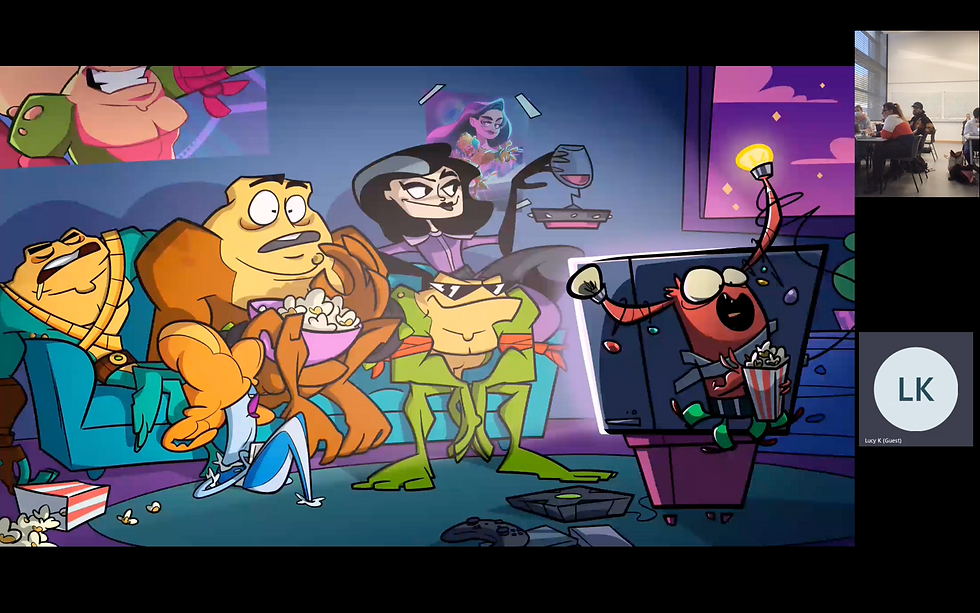Lucy Kyriakidou:
- pm3u19
- Nov 27, 2021
- 3 min read
Updated: Jan 11, 2022
About the talker:
Freelance 2D games artist & art director
WOMG admin
STEM ambassador
Last work she can talk about it Battle toads
Was at uni 2007-2010 then worked 2010-present
Networking:
It is crucial to know people In this industry, the best thing about networking is that once you know someone and have worked with them, they will move around studios and your network will grow for you. Go to networking events and don’t be afraid to go up to the professionals. go say hi to people even if there work is much better than your, you may get pointers and tips of how to improve.
This goes past recruitment and onto relations with previous colleagues and friends in the industry, Lucy mentions how she got suggested for a role as a charater designer at a different studio because she worked so well on a previous project as a character designer and colleague that had moved on to a different studio needed someone and they instantly suggested her. This shortlisted her into getting the role.
Portfolio:
For portfolio its really good to show some of the research and how it translates to the final designs as well as the final pieces themselves as the process is often what they want to know about and the research is the best way to show that.
Don’t be precious with your art, the work might not get used, that’s not because your wrong just sometimes ideas can’t translate or won’t be viable. worst case scenario it can be used in your Portfolio or as a backup idea.

Setting the art style:
This is something that can AND (realistically) will effect the gameplay. although the concept of the game can be clear art style will have a subliminal effect on the work being produced this is just something to consider.

Where will the game be played? The platform will massively effect the designs, how big is the screen (this can have a knock on effect to HUD due to space used on the screen), how high quality can the device produce. Therefore when you come to making the game this should be a first decision your team will make in making the actual game.
Q and A:
Q: What are you looking for in a portfolio?
A: Specialised portfolios are really what we are looking for, but also include stuff to show that you are a flexible in art style.
But you also really need to show the process and the iterations because I need to know how you can get to your final design and how flexible your process is to make sure if something isn't right we can pivot through the designs creation.
Unfortunately one of the most important things we look for is the aspect that they CAN do the same style as the game.
Thoughts on this lecture: Starting this lecture on how she have worked her way through this industry has shed some light on how truly important networking is and keeping good relations with those you do and have worked with. Another thing that this lecture helped me with how I want to present my portfolio work, Lucy had described how people want to see the research it just further informs the person looking at your work that your decisions were correct and fleshed out instead of done on a whim. This talk also gave a lot of input on how the chain of production in the studio can effect the result as well as the clarity that needs to be kept all the way through the production to keep the end result as honed and accurate to the initial design as possible.







Comments